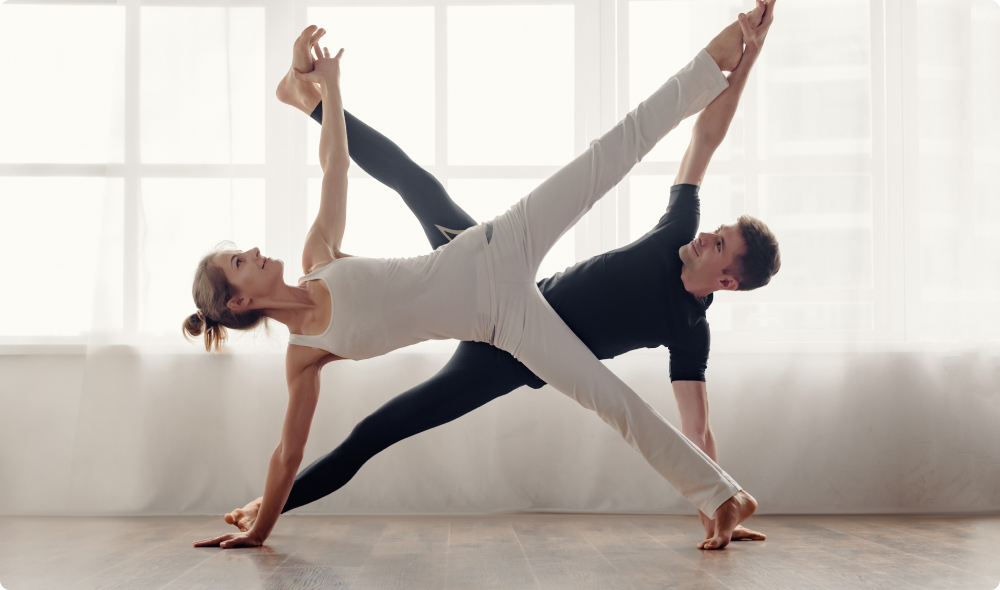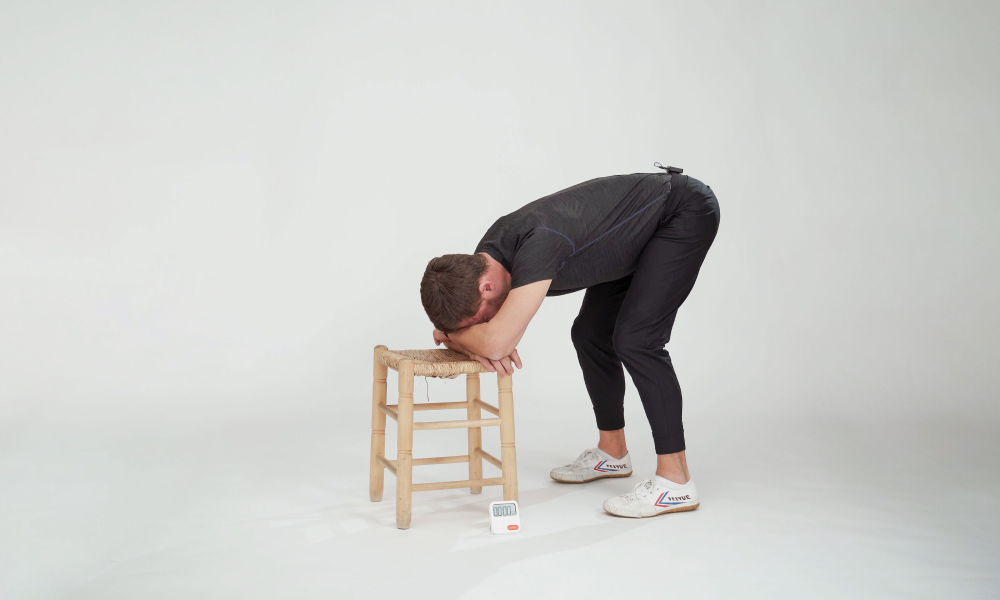Men vs. Women – Who’s More Flexible?
Who’s more flexible, men or women? If you’ve often wondered why women are rumoured to be more flexible, and you want to improve your own flexibility – whatever your sex – this article is for you.
In a room of 50 men and 50 women, the women, on average, would demonstrate greater range of motion. Men have much higher levels of both testosterone and growth hormones, leading to higher levels of muscle mass. More muscle does not necessarily mean tighter muscles, but if flexibility is not trained, more mass usually does correlate with reduced range of motion.
Why does this matter? If your intention is to become a world-class contortionist or dancer, the male vs. female difference might be something to consider. But for average people who simply want to regain basic range of motion (BROM) to touch their toes, squat down, or sit cross legged comfortably, this is a non-issue. Both men and women have the capacity for huge flexibility gains.
The Science of Stretching is a targeted approach to flexibility training designed to restore basic range of motion in anybody, at any age, and is based on over a hundred years of fitness-based yoga practices and dozens of published studies in exercise physiology. In this guide I’ll reveal the key principles of practice and how you can use them to significantly improve your flexibility.
What is Basic Range of Motion (BROM)?
Imagine a healthy 12-year-old playing in the park with friends. They can get up and down from the floor with ease, perform a full squat, and sit comfortably cross-legged. These simple, natural movement patterns are often lost as we age and as we fall into the trap of a sedentary lifestyle. This affects both men and women.
Consistency in stretching is the key to increasing your mobility over time. Unlike strength training, where rest days are crucial, your body adapts best to stretching when done consistently, ideally daily.
Science of Stretching – 3 Principles of Practice
#1. Wet Noodle
Muscles stretch best when completely relaxed. So, when you train for flexibility, try to relax into the poses as much as possible. In some poses, that means total release. In other poses, it means to use as little muscular energy as possible to stay in position.
#2. Breathe to Relax (4:8 Breathing)
Low breathing where you double the length of the exhale promotes a parasympathetic nervous system response and dampens your myotatic stretch reflex. You feel calm and relaxed, and your body doesn’t fight you in the poses. It also gives you a simple point of focus during long challenging stretches. To practice, inhale through your nose to the count of 1-2-3-4, and exhale to the count of 8-7-6-5-4-3-2-1.
#3. Time Under Passive Tension
The gating factor for flexibility is time – how long you spend in these deep poses. Typical Science of Stretching hold times are 2-5 minutes. Your body will always trend toward inertia, so the stopwatch is a way to measure, match, and eventually exceed your previous results.
Try This Pose
Rag Doll Pose (w/ chair)
Let’s apply those three principles of practice to this simple pose.
- Step your feet hip-width apart
- Soften your knees and hinge forward at your hips
- Place your arms on a stool in front of you for support
- Stretch at a 7/10 level of perceived intensity
- Hold for two minutes
- Release, relax and shake it out
Safety Disclaimer
This approach should not be used for warm-up or preparatory stretch routines. The ideal time for deep, passive stretching is after exercise (never before) or before bed as the practice can make you sleepy.
Want to Learn More?
- Science of Stretching 5-Day Program (on demand)
- YOGABODY YouTube Channel (free to subscribe)
- The Lucas Rockwood Show (podcast)
 Article by
Article by 




